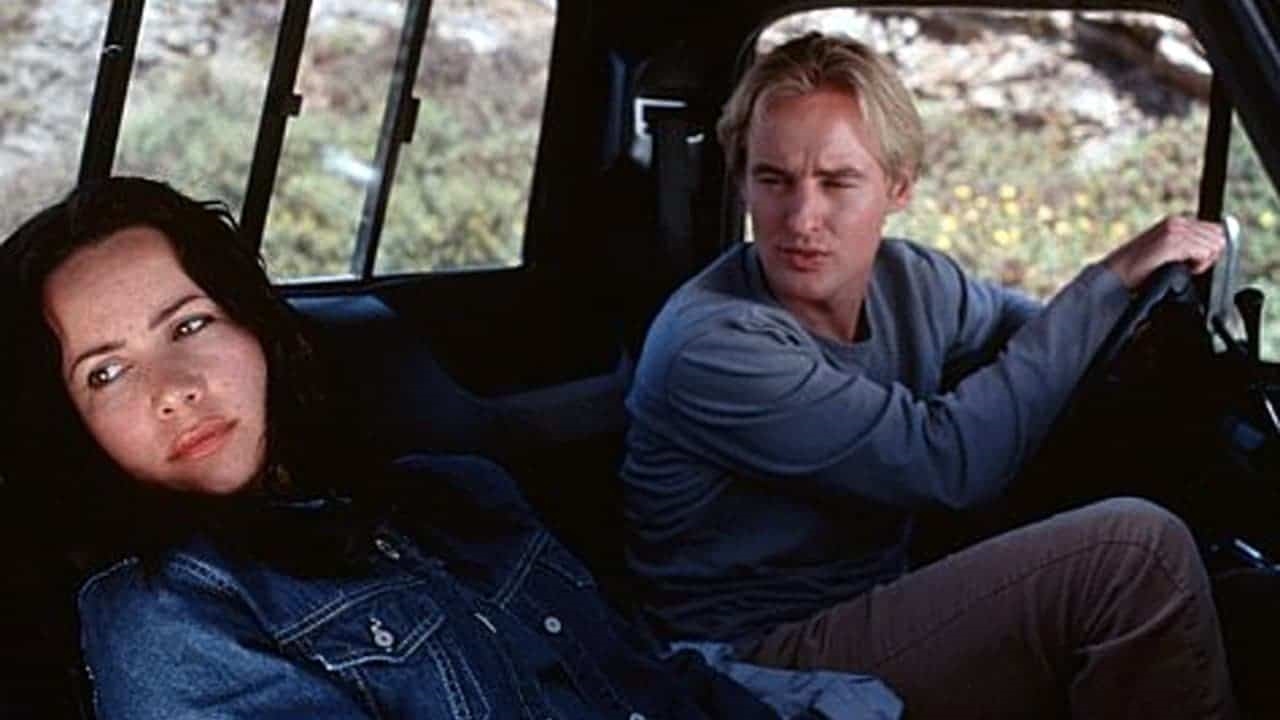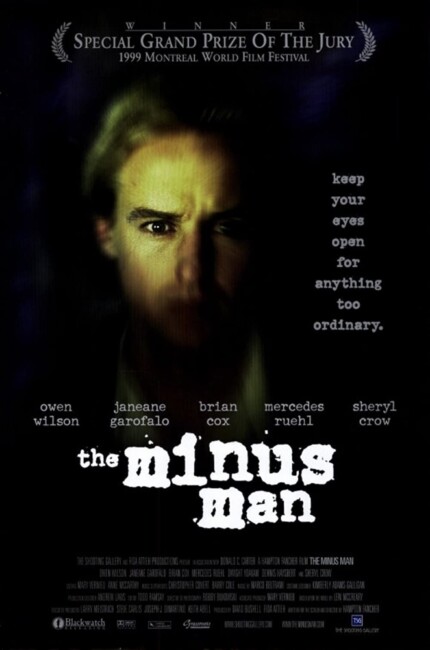Crew
Director/Screenplay – Hampton Fancher, Based on the Novel The Minus Man (1991) by Lew McCreary, Producers – Fida Attieh & David L. Bushell, Photography – Bobby Bukowski, Music – Marco Beltrami, Production Design – Andrew Laws. Production Company – The Shooting Gallery/Fida Attieh Productions/TSG Pictures.
Cast
Owen Wilson (Vann Siegert), Janeane Garofalo (Ferrin), Brian Cox (Doug Derwin), Mercedes Ruehl (Jane Derwin), Dwight Yoakam (Detective Blair), Dennis Haysbert (Detective Graves), Sheryl Crow (Casper/Laurie Bloom), Eric Mabius (Gene Panich)
Plot
Vann Siegert drifts into a small town where he rents a room from Doug and Jane Derwin. Doug gets Vann a job at the post office and he becomes involved with a co-worker Ferrin. However, the friendly and patiently understanding Vann is a killer who likes to poison his victims, always in the belief that he is doing them a service.
The Minus Man was the directorial debut of Hampton Fancher. Fancher is better known as the co-writer of Blade Runner (1982), along with David O. Peoples. Blade Runner came out seventeen years prior to this and Hampton Fancher has only had a single other credit in the interim – the Jamaican-set thriller The Mighty Quinn (1989), which did little business. It may well serve as some testament to Blade Runner‘s enduring status as a classic that Fancher is able to draw enough clout based solely on this credit to mount his directorial debut here. Indeed, The Minus Man is considerable proof that Hampton Fancher’s co-writing credit on Blade Runner was not just due to Writer’s Guild arbitration and that the lion’s share of the script should not be laid solely at the feet of co-writer David O. Peoples, the writer of Twelve Monkeys (1995) and Soldier (1998), as many have assumed.
The Minus Man is a serial killer film but one that is startling in the freshness of Hampton Fancher’s approach. The film is not unakin to Henry: Portrait of a Serial Killer (1986) – in both films, the title character is an enigmatic blank that draws the people around him into a web of random killings. Where Henry was a vacant force of undirected social aggression, Owen Wilson’s killer could almost have been designed as the complete opposite – an enigma that draws people in with his ease and friendliness. Indeed, Vann’s killings do not seem to be motivated by the need to work out a roiling mass of hatred and violence within but instead come with the exact same ease and friendliness as the way he befriends everyone throughout the film.

Hampton Fancher’s approach is extraordinarily laidback. The film is photographed with the attention to the slow, ordinariness of life that might in any other film have it pegged as a genteel Midwest drama about the nostalgia of growing up. The film comes so laidback it is almost in danger of fading away altogether. When Fancher does throw thriller elements in, they come so nonchalantly and so throwaway that one is astounded at the casualness with which they slip by – this is a film that unless you pay attention to the minutiae of dialogue you are wont to miss something important.
In any other film, the announcement of the body of Sheryl Crow being found and the police manhunt for the killer, the announcement of Mercedes Ruehl’s murder and Brian Cox’s arrest would all be played as major dramatic jolts. Instead, Fancher underplays them with incredibly casual nonchalance and the result is often considerably more startling than if they had been dramatically hyped. Fancher also has a wonderfully poetic ear for dialogue and Owen Wilson’s dreamy voiceovers explaining himself are haunting – “with a word I could place them all to rest,” he says as he joins the hunt for the missing quarterback.
Hampton Fancher did not direct or write another film until he co-wrote the screenplay for Blade Runner 2049 (2017).
(Nominee for Best Adapted Screenplay at this site’s Best of 1999 Awards).


